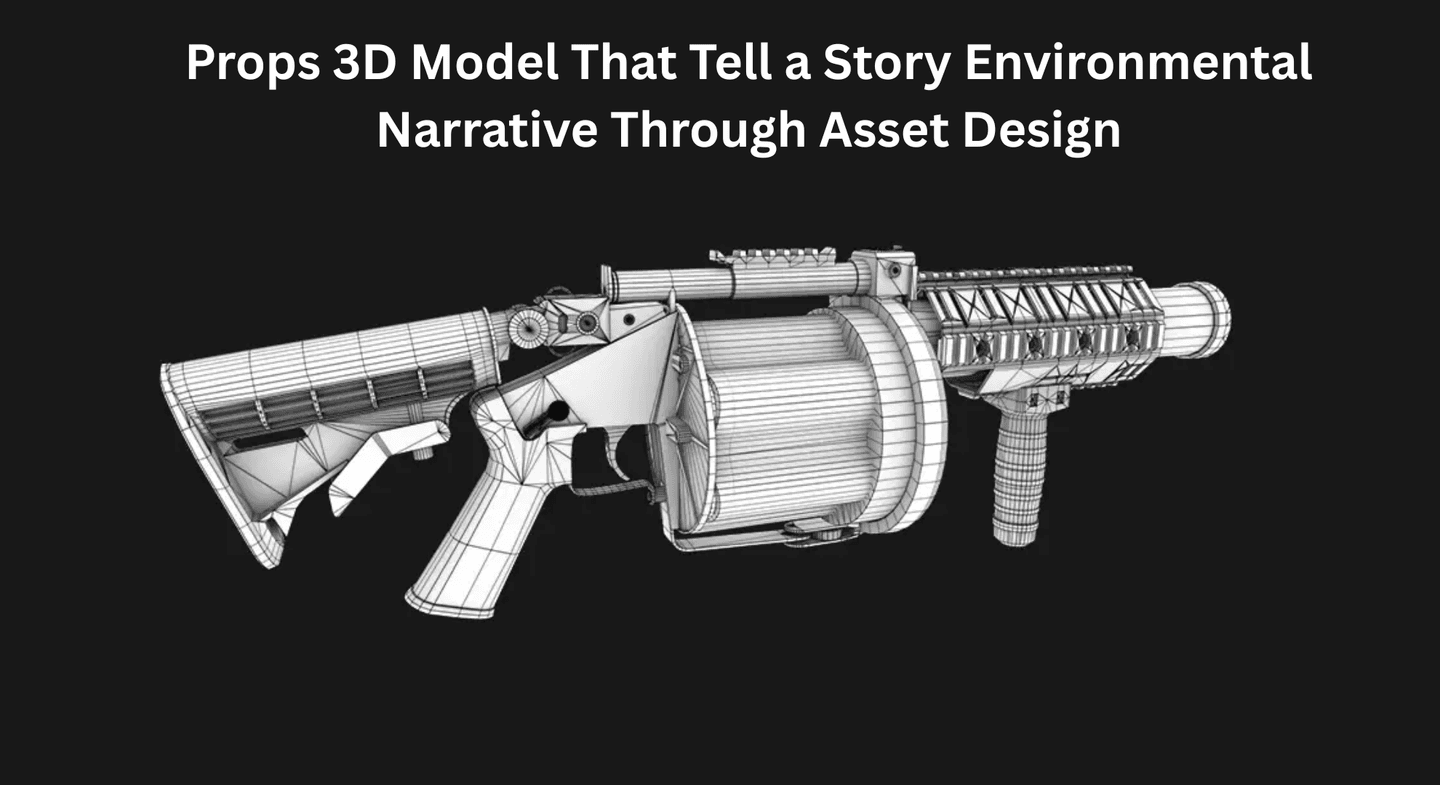Props 3D Models
Props 3D Model That Tell a Story Environmental
Created on 18th June 2025
•
Props 3D Models
Props 3D Model That Tell a Story Environmental
The problem Props 3D Models solves
In the expansive worlds of modern video games, storytelling isn’t confined to cutscenes or dialogue alone. The most immersive experiences unfold organically, drawing players into the game world through subtle visual cues—rusty weapons, shattered furniture, forgotten trinkets. These are not mere background elements; they are carefully designed props 3D models that speak volumes. In the realm of 3D modeling games, environmental storytelling through asset design is an art form, and 3D props are its unsung heroes.
This blog explores how 3D game assets contribute to storytelling, why 3D environment modeling matters, and how developers can use hard surface modeling and 3D vehicle modeling to weave unforgettable tales in their virtual worlds.
Why Props Matter in Environmental Storytelling
When entering a 3D game environment, players immediately begin forming assumptions. What time is this? Who lives here? What has happened recently? These insights don’t always come from characters or quests—they come from the environment and its props 3D models. From an abandoned car 3D model filled with moss to a bloodied tool bench, each item contributes context.
These props tell a story not with words, but through:
Placement (Where is it found?)
Condition (Is it broken, clean, used?)
Material and detail (Is it metal, plastic, or ancient wood?)
Interaction (Can it be picked up, moved, or used?)
The beauty of this approach is that players feel like they’re discovering the story themselves rather than having it told to them. It’s an approach that requires meticulous 3D game asset planning.
The Role of 3D Modeling in Game Design
Creating props that tell a story begins with high-quality 3D modeling services. In 3D modeling games, every asset, from a rusty kettle to a broken-down bus, must be visually believable and narratively rich.
Here’s how 3D environment modeling supports storytelling:
- Realism and Believability
Tools like Blender, Maya, and ZBrush allow artists to craft complex 3D hard surface modeling details—welds, screws, and damage—making each prop feel “lived in.” - Consistency of Style
Inconsistency can break immersion. For example, if your game has a dark, post-apocalyptic tone, clean or cartoony props will feel out of place. This is where a strong art direction and adherence to style guides come into play. Every props 3D model must harmonize with the game’s overall aesthetic. - Story Hints Through Design
An old car 3D model left with shattered glass and a faded license plate could suggest a past chase or an abandoned town. An intricately modeled statue with ritualistic carvings hints at ancient cultures or beliefs. With clever modeling, the prop becomes the story.
Types of Props and Their Narrative Functions
Let’s explore different kinds of 3D game assets and how they can serve environmental storytelling:
Functional Props
These include doors, levers, terminals—anything the player interacts with directly. Their design often informs the player how to use them. A glowing terminal hints it’s still operational.
Decorative Props
These might never be interacted with, but are critical for immersion. A table set for dinner in a war zone might invoke tragic nostalgia. Though passive, these props 3D model often carry emotional weight.
Vehicle Props
Cars, bikes, and even futuristic hovercrafts can be more than transportation. A burnt-out 3D vehicle model might symbolize escape gone wrong. A luxury car 3D model parked in slums may contrast with wealth disparity. Vehicles, especially in urban or dystopian games, often hint at deeper social and environmental contexts.
Large Environment Props
Buildings, bridges, statues—these might straddle the line between prop and full 3D game environment. Their scale allows for more expansive storytelling. A collapsed bridge might hint at a natural disaster; a half-constructed tower could symbolize halted progress or rebellion.
Crafting Props with Hard Surface Modeling Techniques
Hard surface modeling is essential in making non-organic, mechanical, or man-made items, perfect for most props. This process involves:
Blocking out base shapes for proportions.
Adding detail through bevels, booleans, and subdivisions.
Normal mapping and baking for game optimization
A well-executed 3D hard surface modeling pipeline ensures the props are not just functional, but visually rich and optimized.
Integrating Props into 3D Game Environments
Once designed, props need proper integration into the 3D game environment. This includes:
Scene composition: Placing props to guide player focus.
Lighting: Highlighting key props subtly through natural light sources.
Clutter placement: Avoiding overuse, but maintaining realism with lived-in spaces.
The placement of props can direct narrative flow. A trail of broken furniture may lead players to a hidden area. Scattered medical kits might suggest an upcoming fight or healing opportunity.
Case Study: Props in Environmental Storytelling
Take the game The Last
Technologies used
